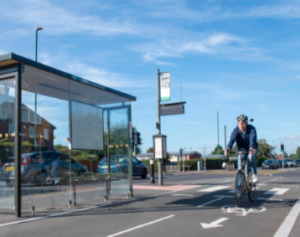England would need up to £18bn to grow cycling equitably between rural and urban areas, according to Chris Boardman, Head of Active Travel England.
Speaking to the Transport Committee this week, Mr Boardman said with the current budget of around £3.8 billion, to meet the target of half of all journeys in towns and cities are made by cycling and walking by 2030, the focus will have to be on high-yield urban routes.
He told a Transport Committee that while ATE will deliver some rural routes, he’d love to see a ‘more equitable approach’.
He said targeted increases in active travel to meet the 50% target would cost £9bn, while doing so equally across rural and urban areas would cost double that, adding “this is what it takes to deliver the product. And then it’s a political decision of how important you think it is”, reports Cycling Industry News.
On delivering routes across England Boardman said: “If we focus on areas of high population density, we focus on [authorities] who have the capability now to meet the targets by 2030, we can do that. If we want to spread it more equitably across the country, go to rural areas, then that will move towards the £18 billion, and that’s a governmental choice.”
Danny Williams, ATE’s CEO also said internal targets to build 3,000 miles of new cycle route by 2025, while engaging with 3,000 developments, including new housing estates of more than 150 units.
Mr Williams said a legacy of stop-start funding has created “pockets of excellence” around the country, and long-term funding now available will allow ATE to be “a centre of excellence and start to do things properly, with a long-term plan and a robust commitment to making that happen,” as well as bringing more authorities up to scratch.
He said: “We set ourselves by 2025 to be funding 3,000 miles of active travel routes. That’s one of the metrics. We want to interact with 2,000 projects we want to be involved with at least 1,000 new housing developments, helping make those all work better”
Sustained investment in active travel in London has generating 25% growth in cycling, while adding in Greater Manchester cycling is up 40% on 2015 levels.
“I think right now we also have a duty to ensure that people have access to cheap transport.”
“Active travel provides all of that for the local journeys, the vast majority of which are less than five miles, and a huge, around about a third, are less than a mile. So it is a part of our future as part of an integrated transport system,” Mr Boardman said.
ATE is also putting together guidance videos to help local authorities understand, from those who have been there before, the challenges and benefits of committing to active travel investment, and reallocating road space.






















